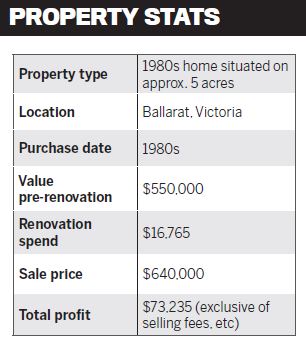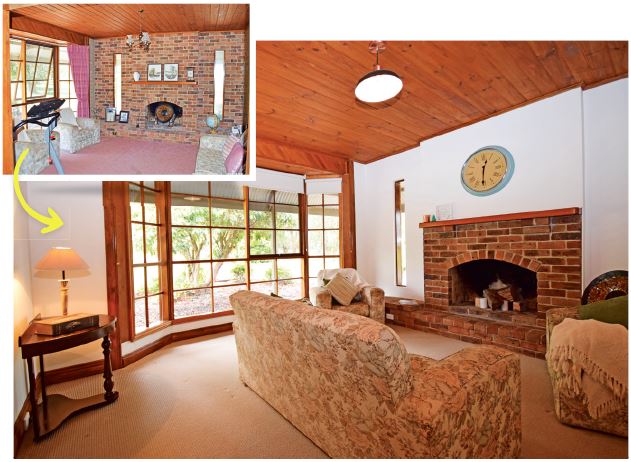Jo Powell isn’t one to shy away from a property challenge. She made her first investment in real estate when she was just 20 years old, purchasing a small residential home as an investment, which she eventually renovated and sold for a tidy profit. Fast-forward to today and she’s worked with dozens of clients on projects of varying complexity, with one main goal: to help people maximise their sale prices when selling their homes or investment properties.

Jo now runs her business with the aim of assisting property owners by drawing on her knowledge gained from her accounting, property development and renovation background to help them realise their property goals.
“I have been an investor in the residential and commercial property markets for 25 years and I know how important first impressions are,” Powell says.
It’s safe to say that when Powell was approached by this particular client, their property lacked a strong first impression.
Located on the outskirts of Ballarat on the ‘Melbourne side’ of town, this mud-brick single-storey property situated on approximately five acres was constructed in the late 1980s.
“It had been built by its current owners, and it had not been updated in any way since its construction,” she explains.
“The owners were looking to sell the property and downsize and came to me for advice regarding what improvements they could make to improve the saleability of the home and maximise the potential sales price.”
“We were able to work with our client to devise a plan to prepare for the sale, which they could then implement themselves”

Prior to undertaking any work on the home, several real estate agents were asked to provide indicative values for the property.
The general consensus among them was that the property would achieve a sale price in the vicinity of $550,000 in its pre-renovated state.
However, the property’s lacklustre condition meant it might have struggled to find a buyer for some time, as the average time to sell a property in the city of Ballarat then stood at around 73 days.
“The owner of the property advised that the budget for all works was to be capped at a maximum of $20,000. The budget for prioritised works was $16,763, and this was the amount they ultimately spent on the renovation,” Powell says.
“Following the update, the property sold in 13 days – and for $90,000 above the expected, pre-renovated sales value.”
So what was the secret sauce that allowed such a magic transformation to take place?
How did a $16,765 reno delivered over $70,000 profit?
With a project like this, it’s essential that you focus on the areas that deliver the maximum bang for your buck.
For this house, the main areas addressed were:

Fixtures and fittings. These can really date a home, and it’s relatively inexpensive to change light fittings, door handles and cupboard knobs.
Flooring: By updating the flooring in the bathroom, laundry and toilet area, it refreshed the space from the bottom up. The living areas were also recarpeted.
Kitchen: The budget didn’t allow for a full kitchen upgrade, but fortunately this home didn’t actually need it. With repainted cupboards,
Conversion: This was a big-ticket upgrade. The former unfinished garage space, which adjoined the dining room, was transformed into a media room, adding significant value by creating a new living space for the home.
Minor updates: In addition, a few further upgrades were done, such as a new shower screen in the bathroom, and updated window furnishings.

“This, combined with what ultimately turned out to be a very short sales campaign, meant that the stress that might have been associated with the sale of this property was minimised – something that was highly valued by our client.”
If you’re looking for a quick turnaround and minimum fuss, Powell says planning and preparation are your key allies in your quest for renovation success.
Have a clear brief
The brief provided to me by my client was to devise a plan that updated the appearance of the property, with a view to presenting it for sale and thereby maximising its sale value.
Know your strategy: DIY or professional?
With this objective in mind, I assessed the property and developed a plan that included recommended colours and finishes for the specific areas being addressed. My client implemented the plan themselves.
Accept that planning is crucial
I can’t stress enough the importance of planning. You need to fully plan in advance of commencement. This allows you to anticipate problems and address them before they are a reality. Always ask yourself: how can I achieve ‘the look’ or ‘the feel’ at a reduced cost?
Beware of budget constraints
Prepare a detailed budget and do not deviate – at all, even a little – unless absolutely necessary.
Allow for contingencies
They are inevitable. If you haven’t planned for them, they will become necessary, and if they are not in your budget to begin with, you will have issues.
